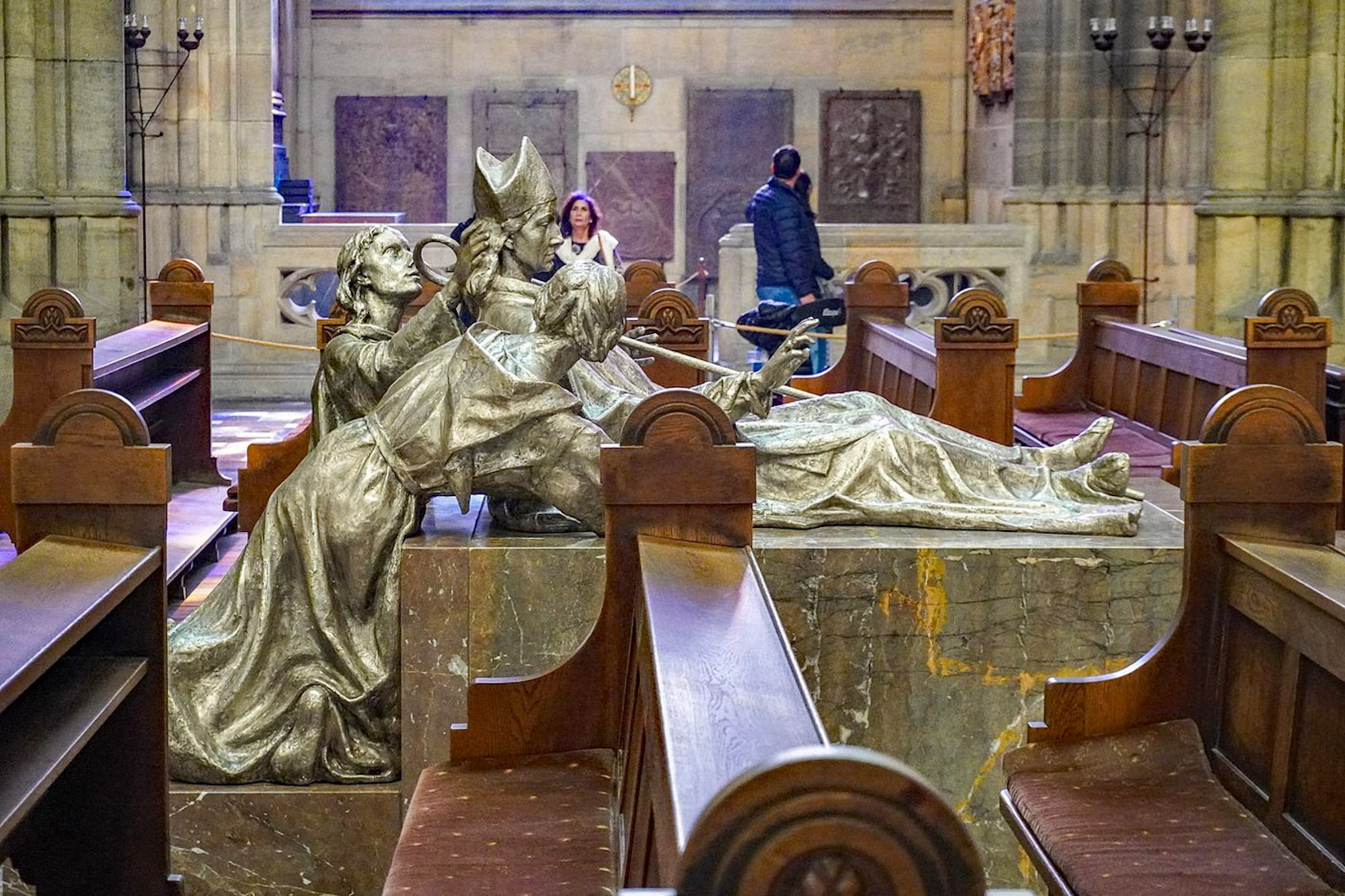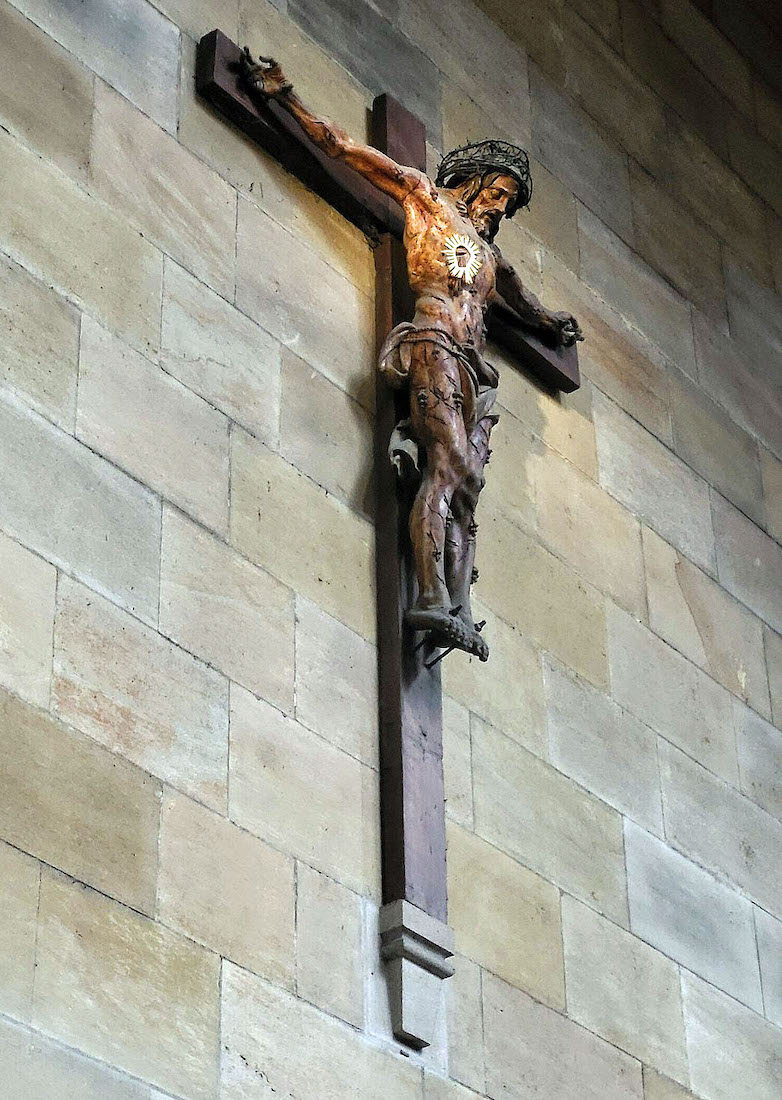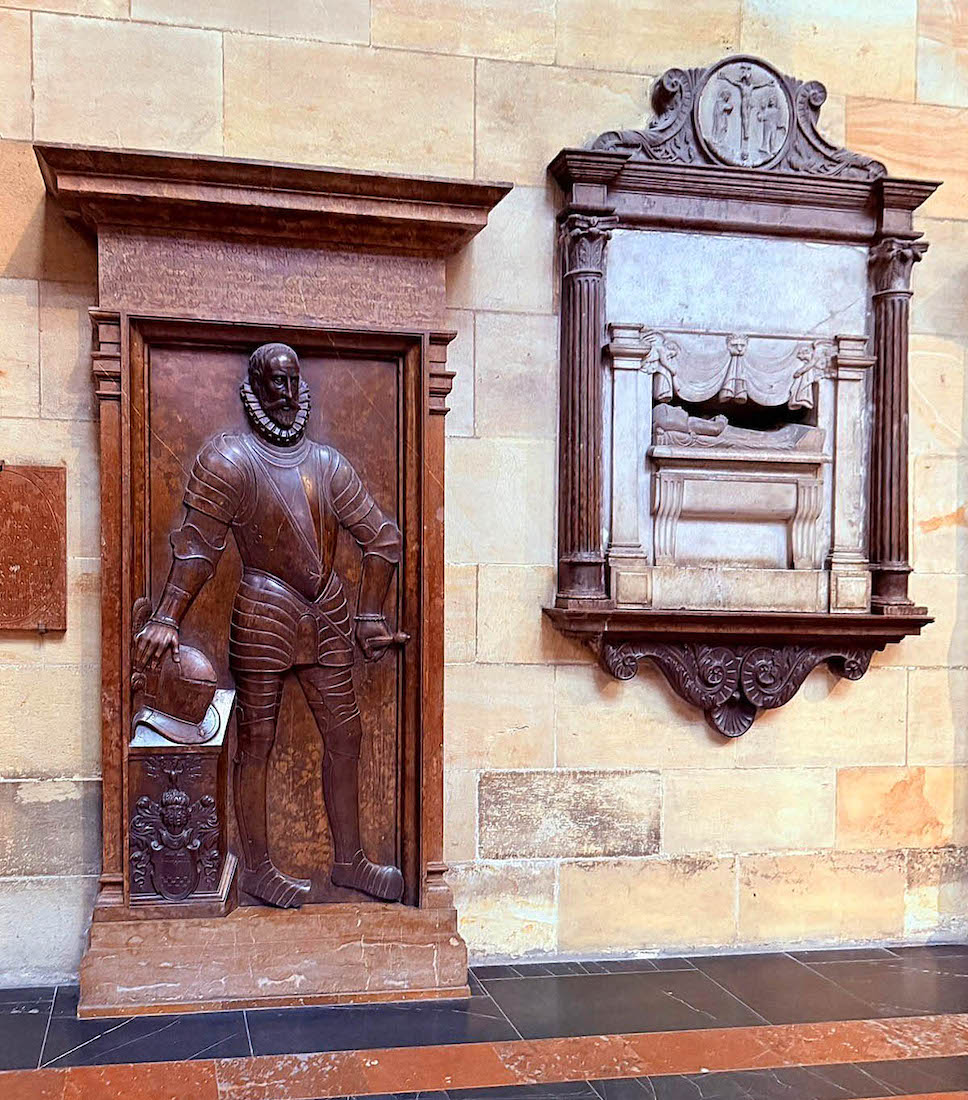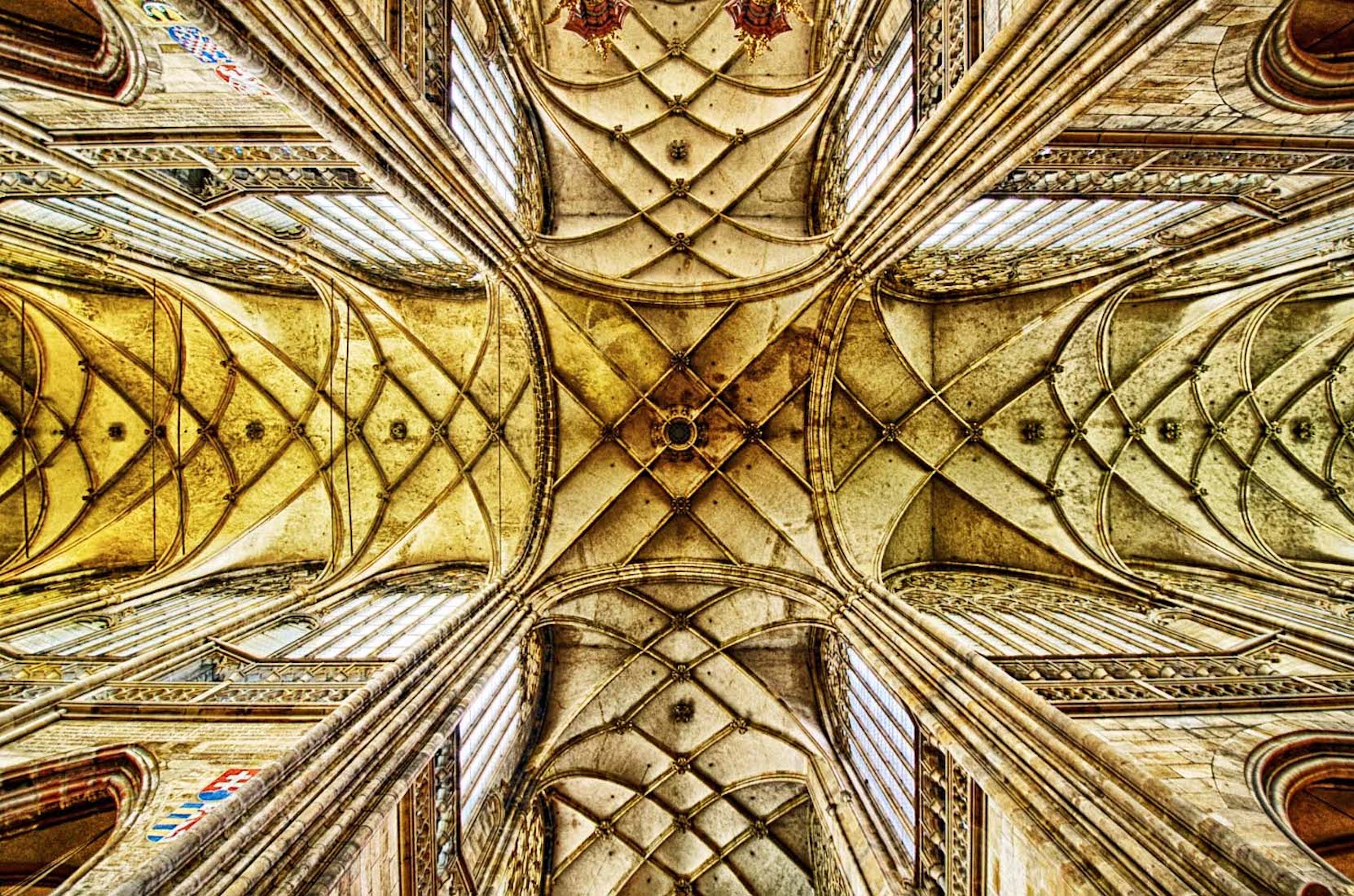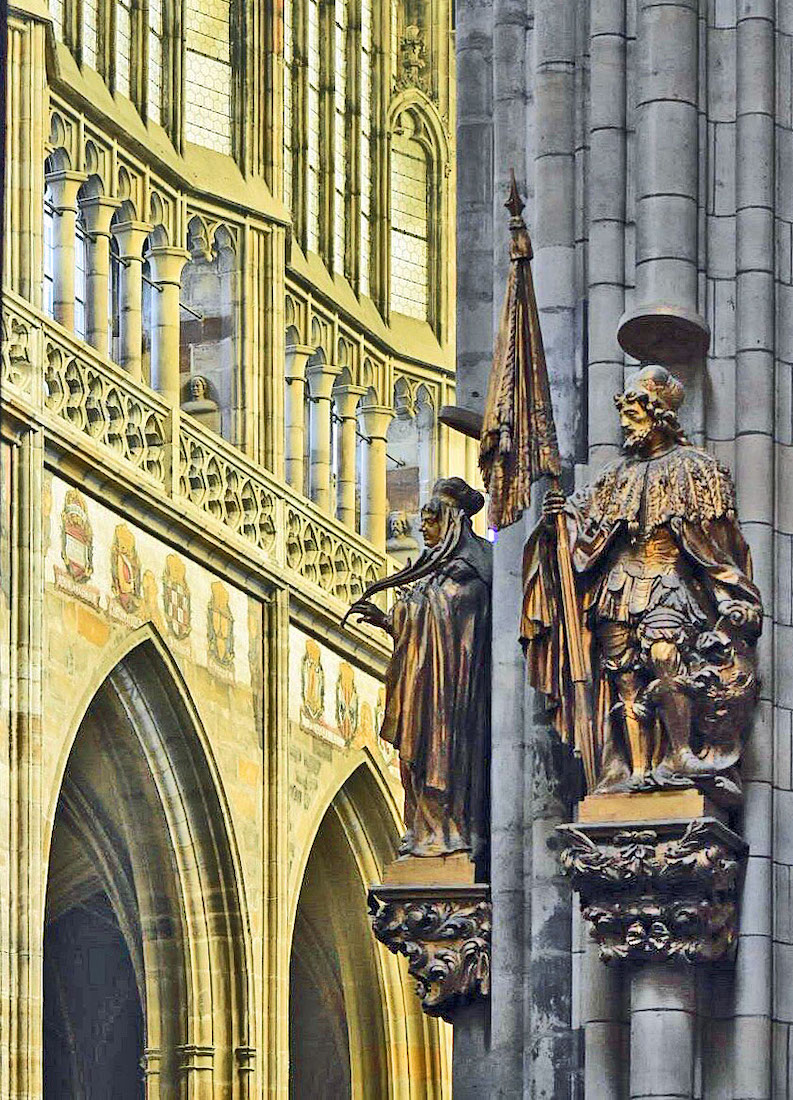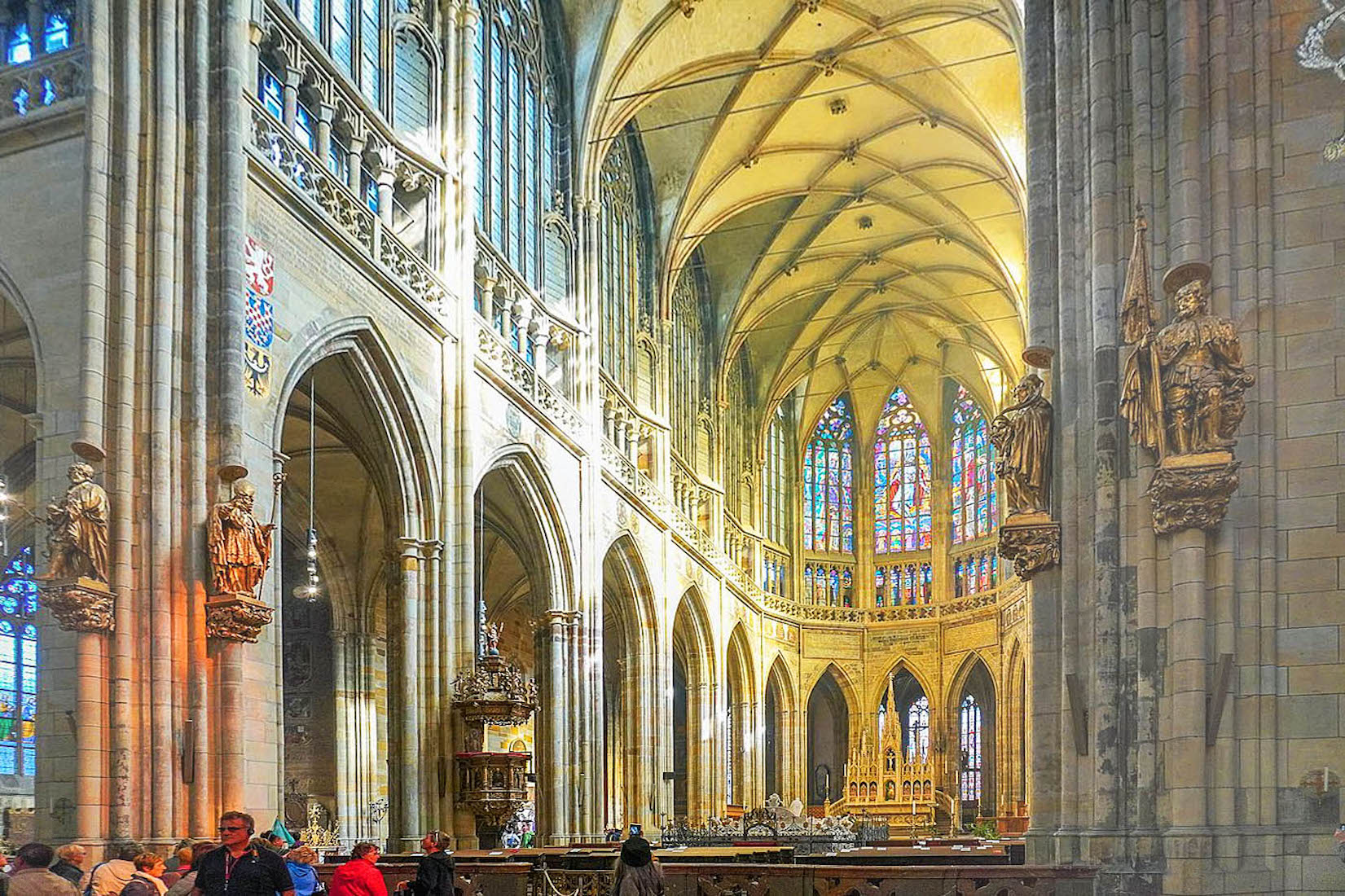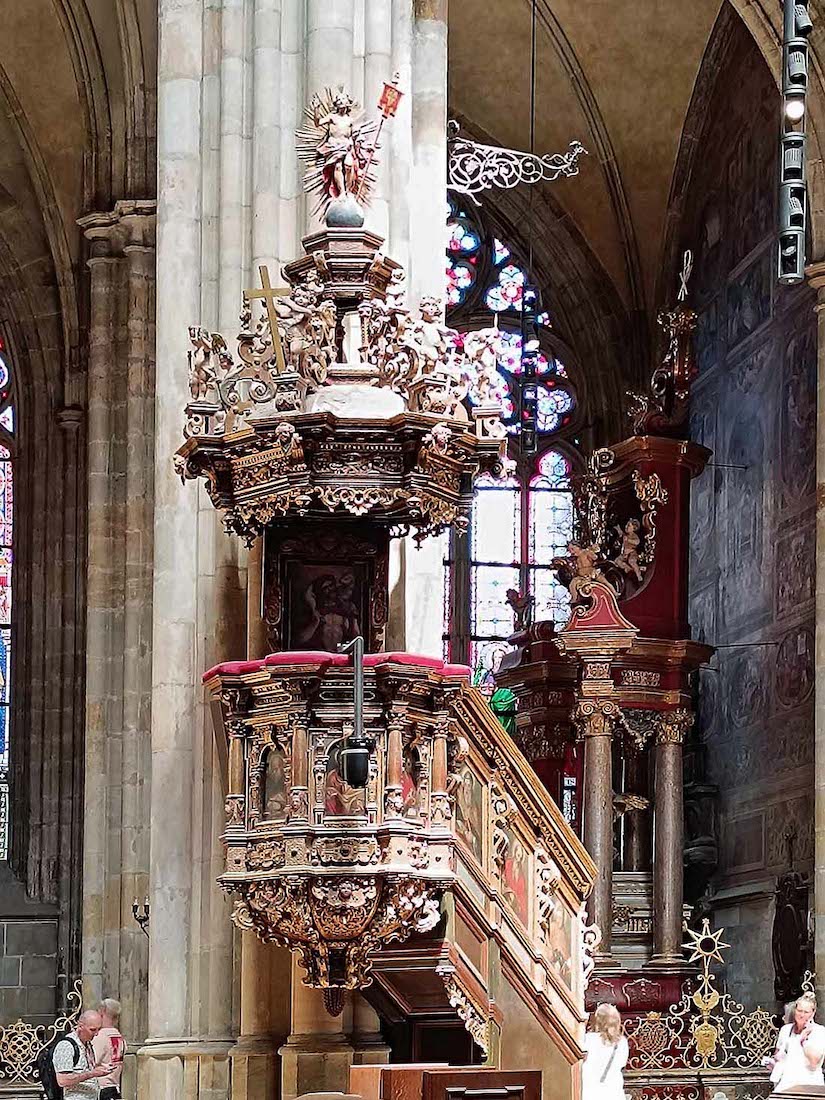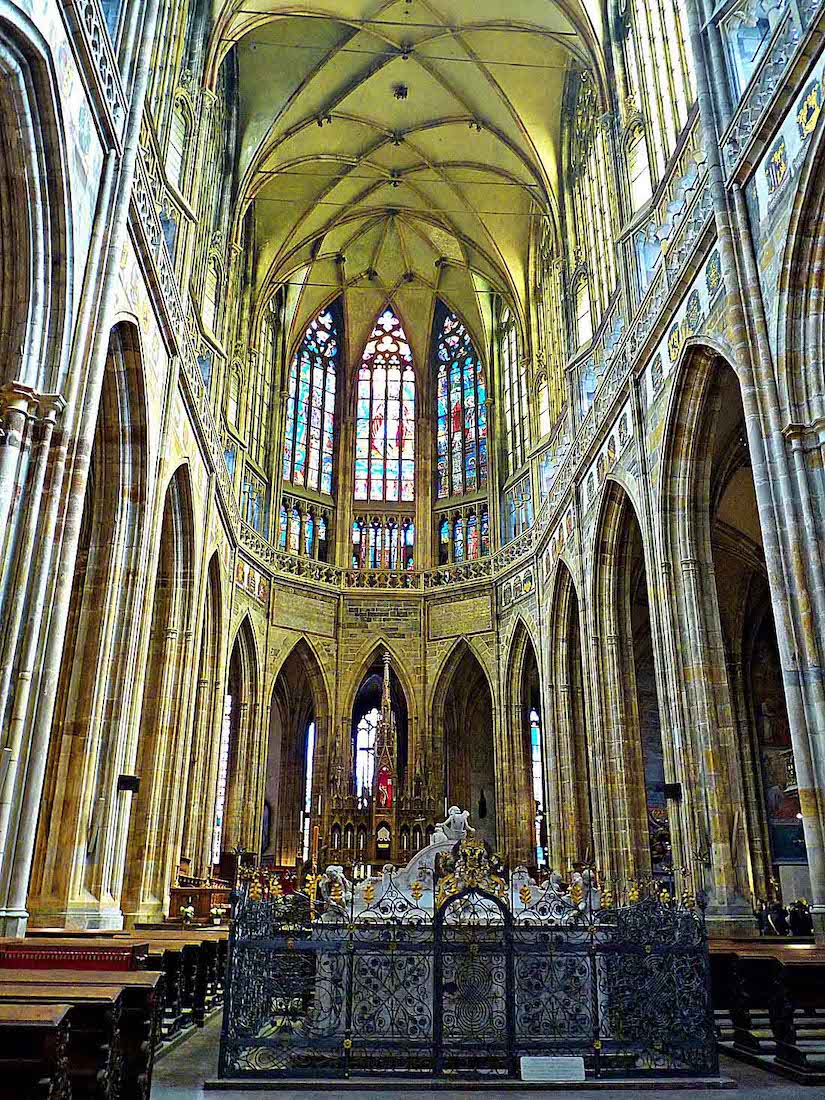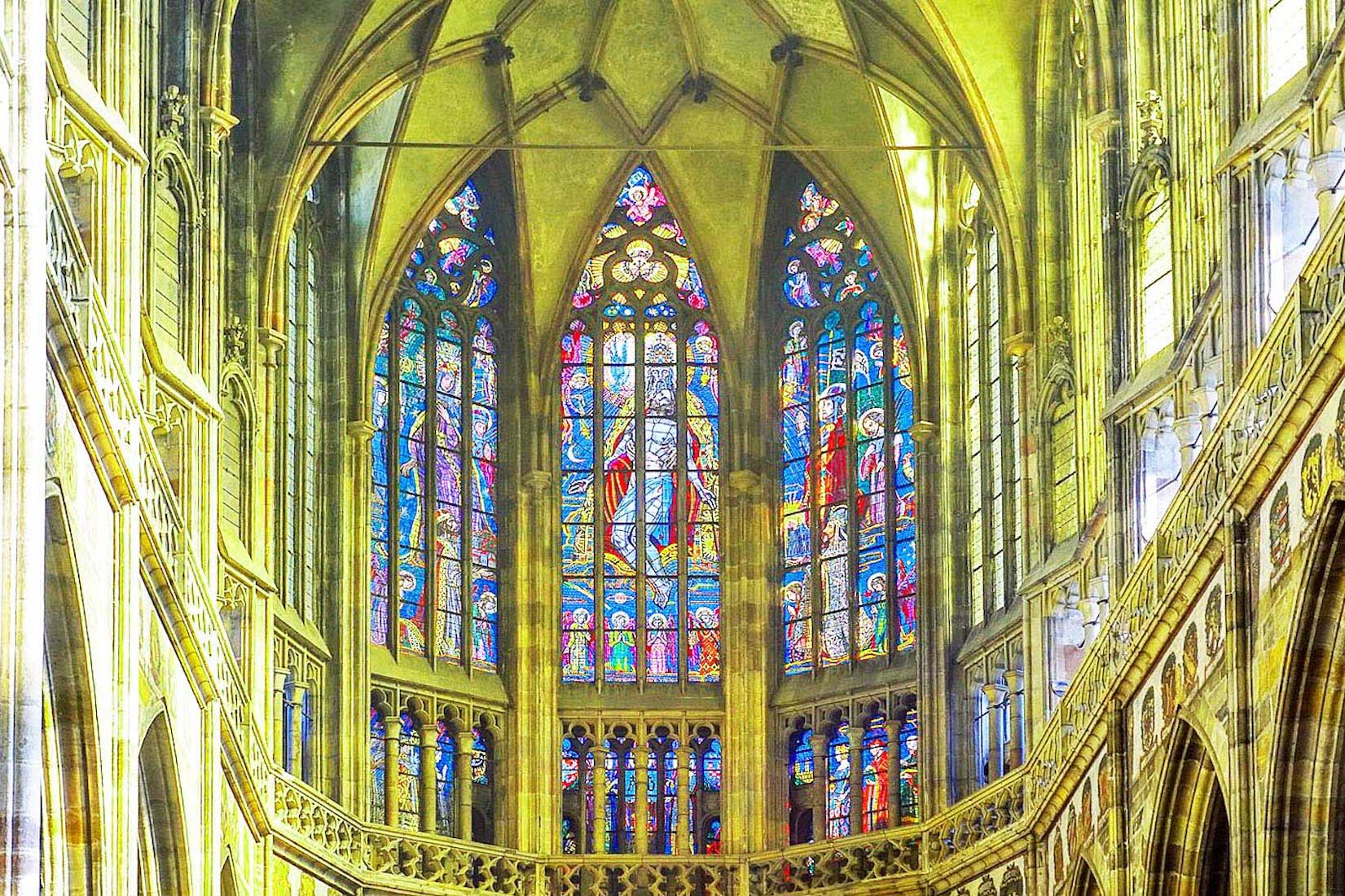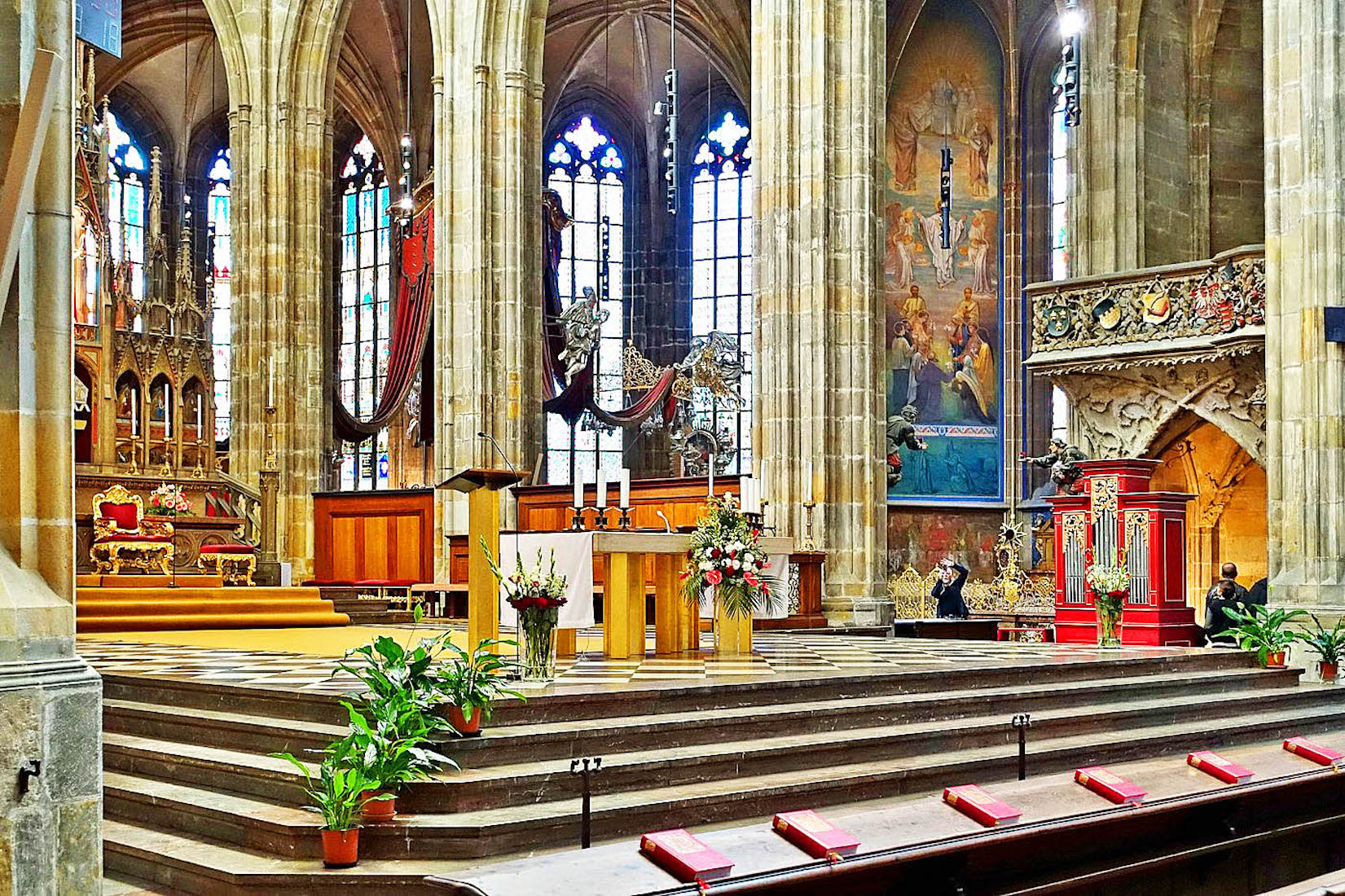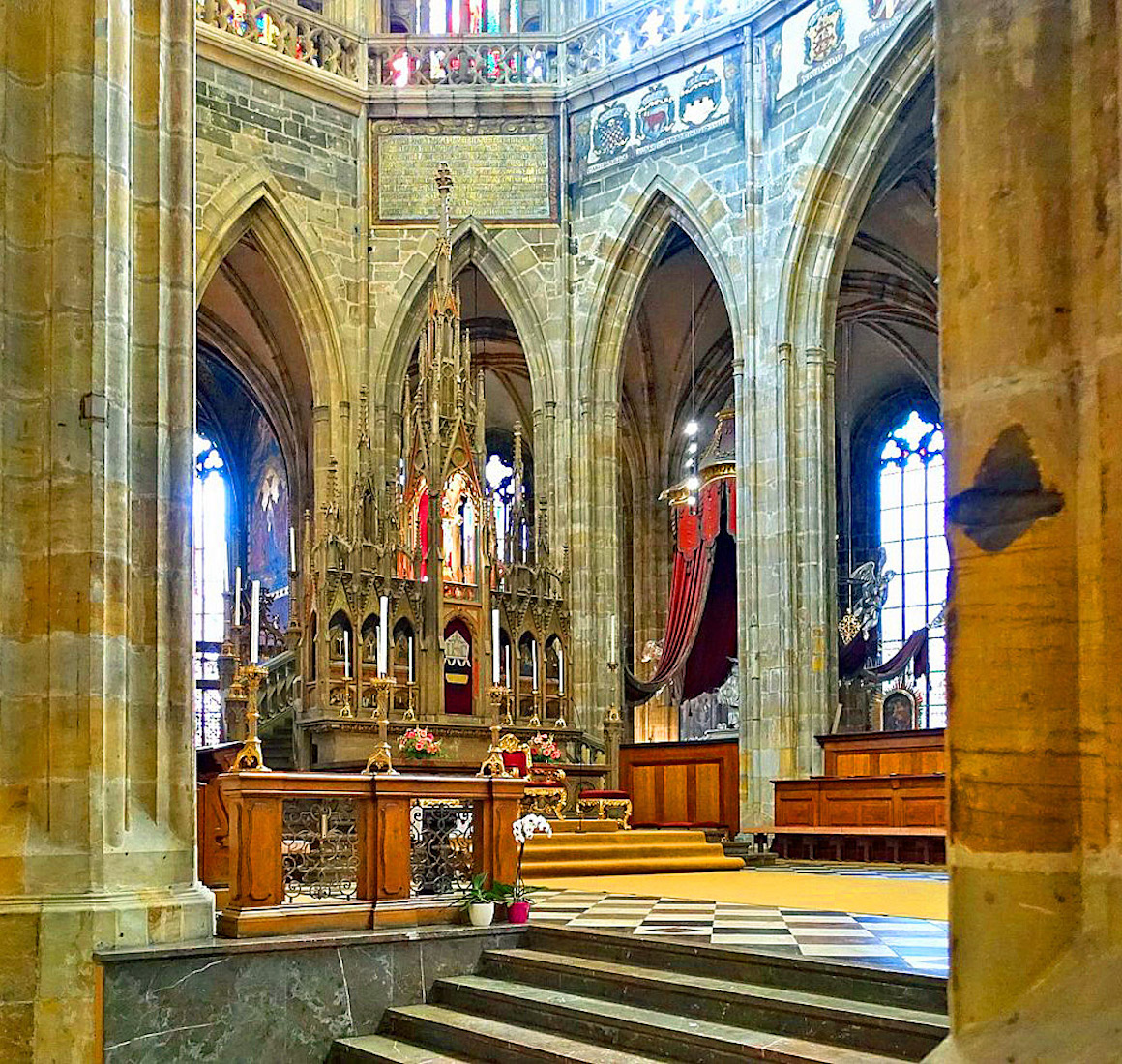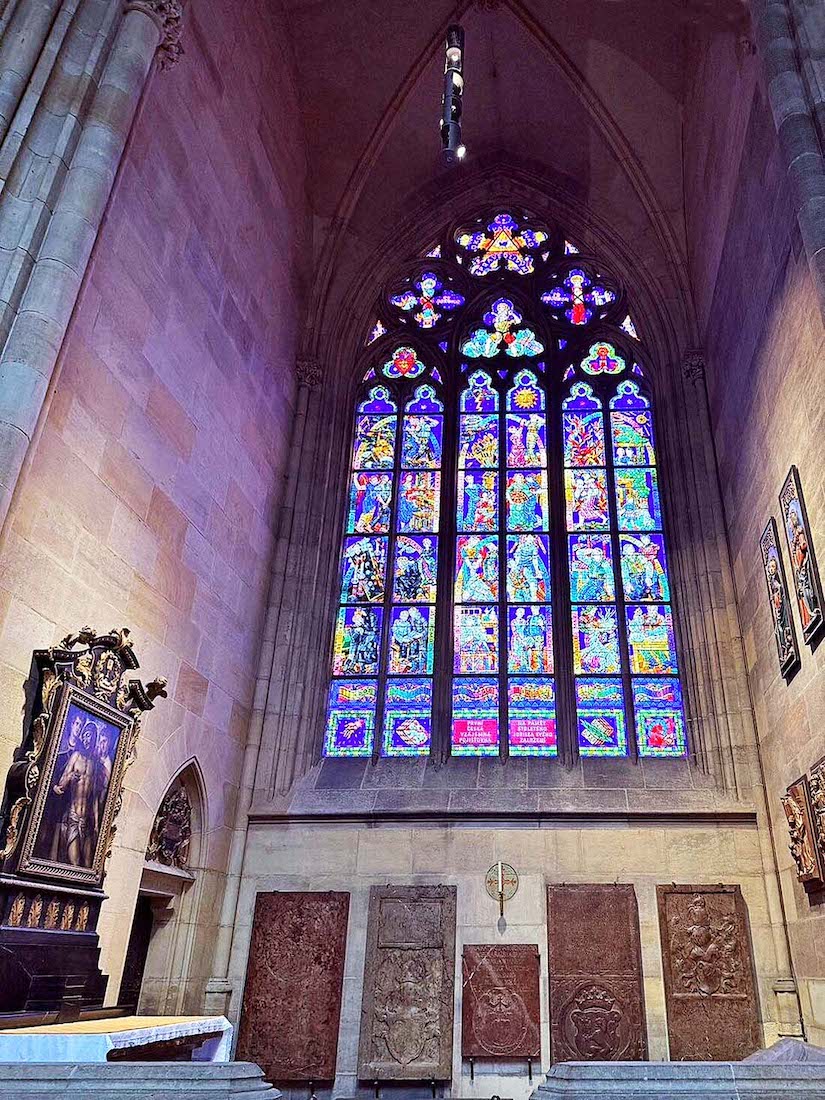
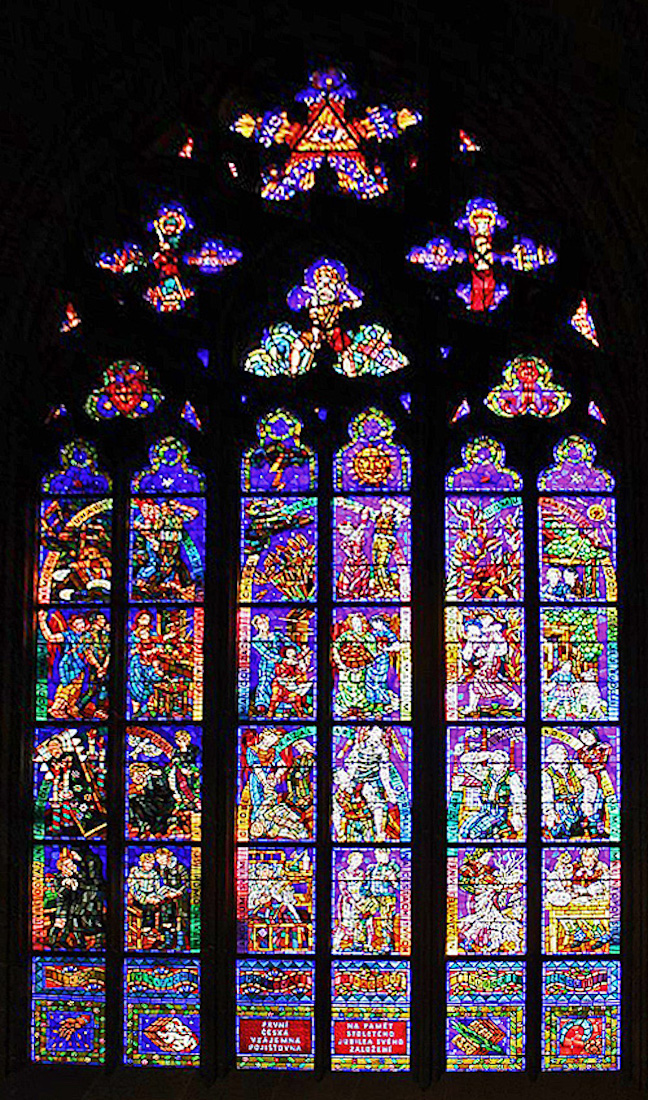
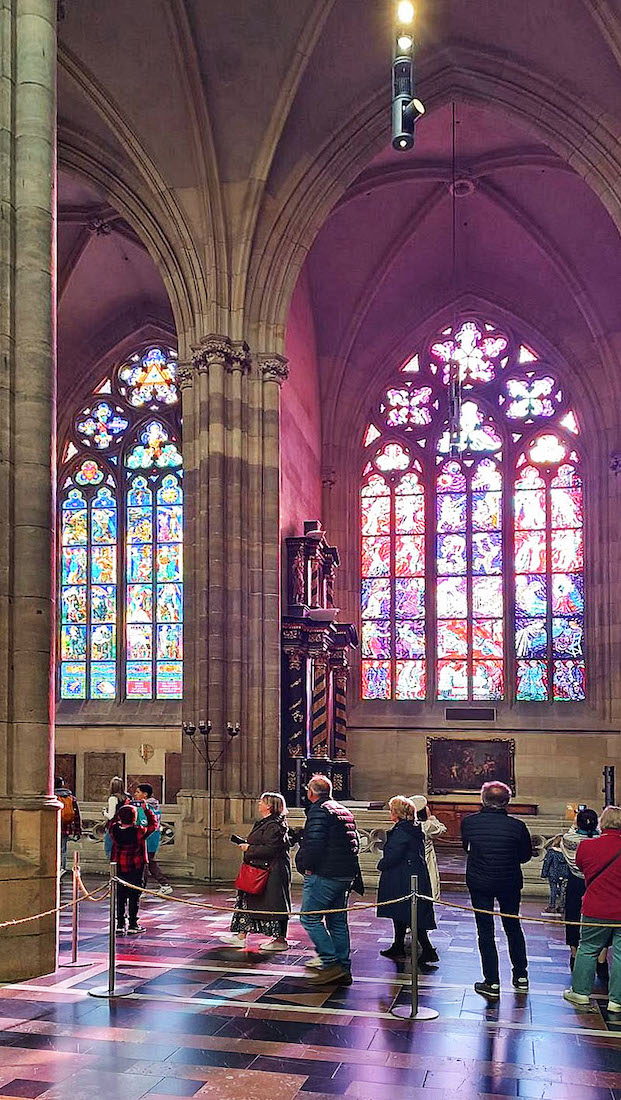
We are nearing the end of our circuit of the many chapels of St Vitus Cathedral! We come to the Thun Chapel which was themed by František Kysela after Psalm 126:5 – ‘Those who Sow in Tears Shall Reap in Joy’. It says: ‘Those who sow with tears will reap with songs of joy. Those who go out weeping, carrying seed to sow, will return with songs of joy, carrying sheaves with them’. The window depicts scenes which provoke sorrow: floods, hailstorms, fire, death and natural disasters. The idea is that it is only through sorrow that we can genuinely appreciate happiness and joy. [Phot1o Credit: nancy921] [Photo2 Credit: Øyvind HolmStad] [Photo3 Credit: Marco Colli] INDEX
C30. CHAPEL OF THE HOLY SEPULCHRE TA TA
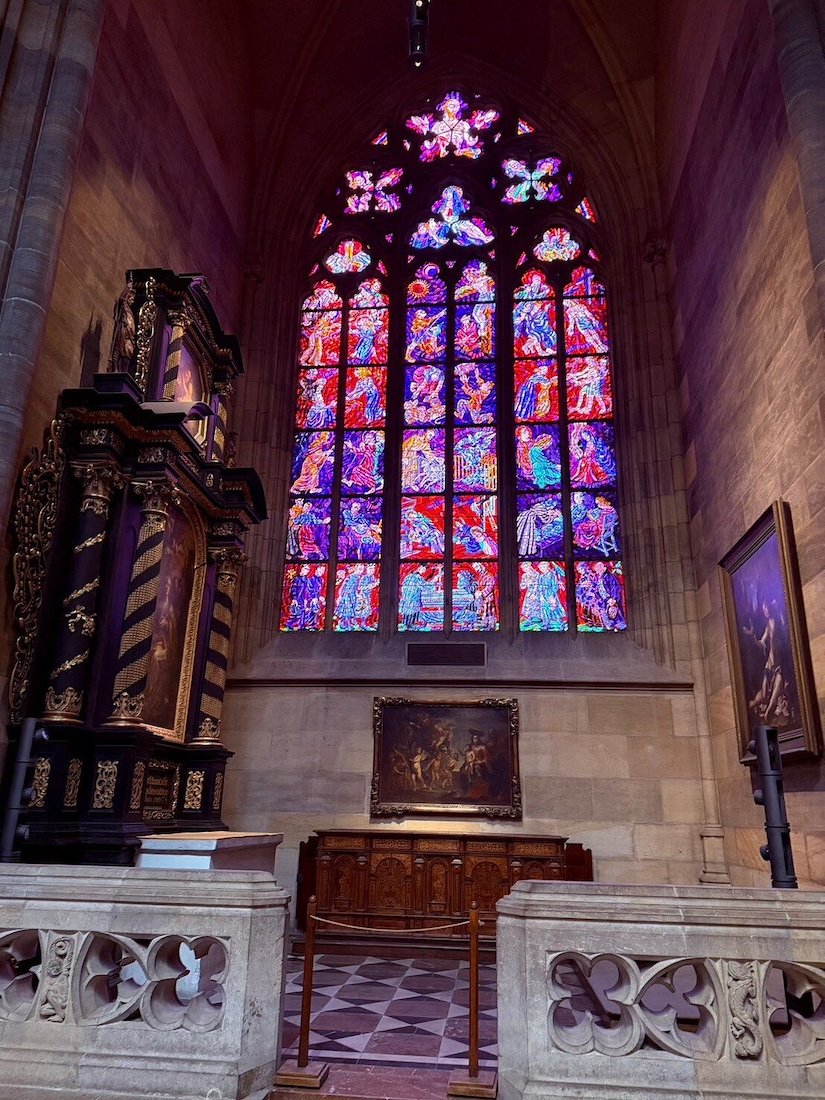
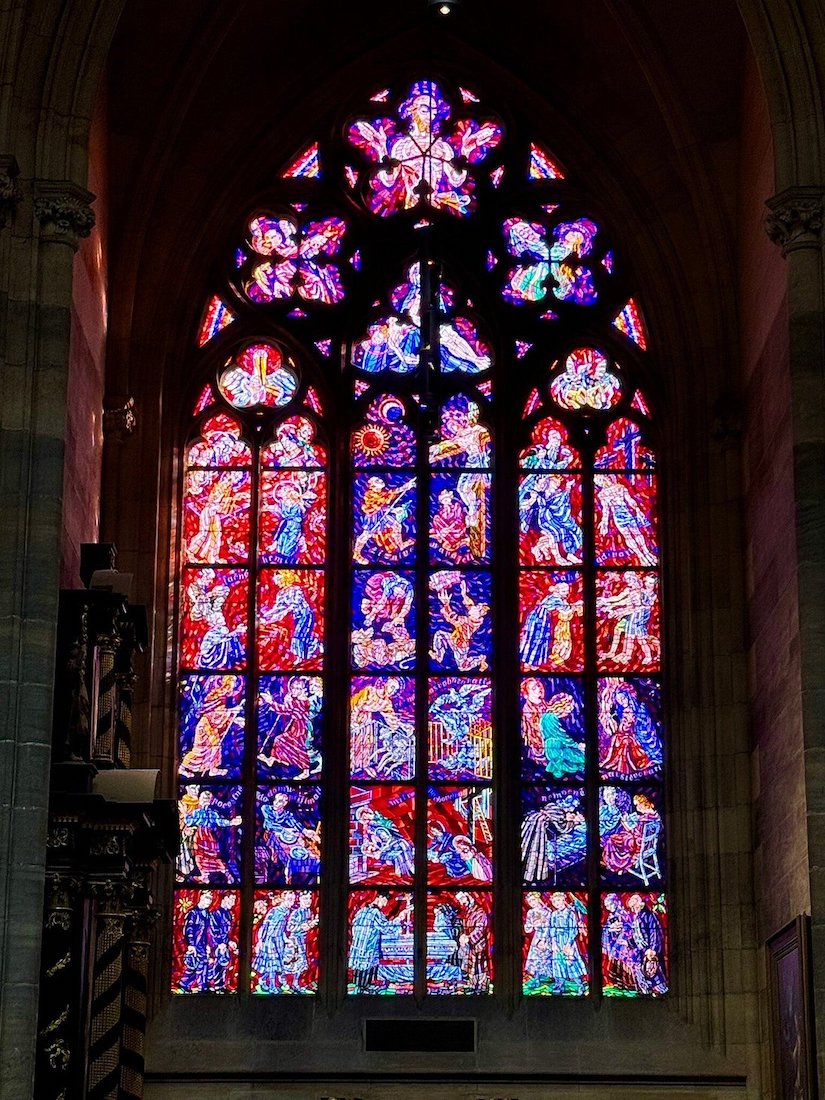
In the next chapel, the Chapel of the Holy Sepulchre, the large, pink and purple stained glass window draws out all the different ‘Acts of Mercy’. There is also an early Baroque altar from 1674 and a picture of St. Mary Magdalene from 1600. [Photo1 Credit: nancy921] [Photo2 Credit: Tom R]
C31. LUDMILLA CHAPEL TA (x3) GSV
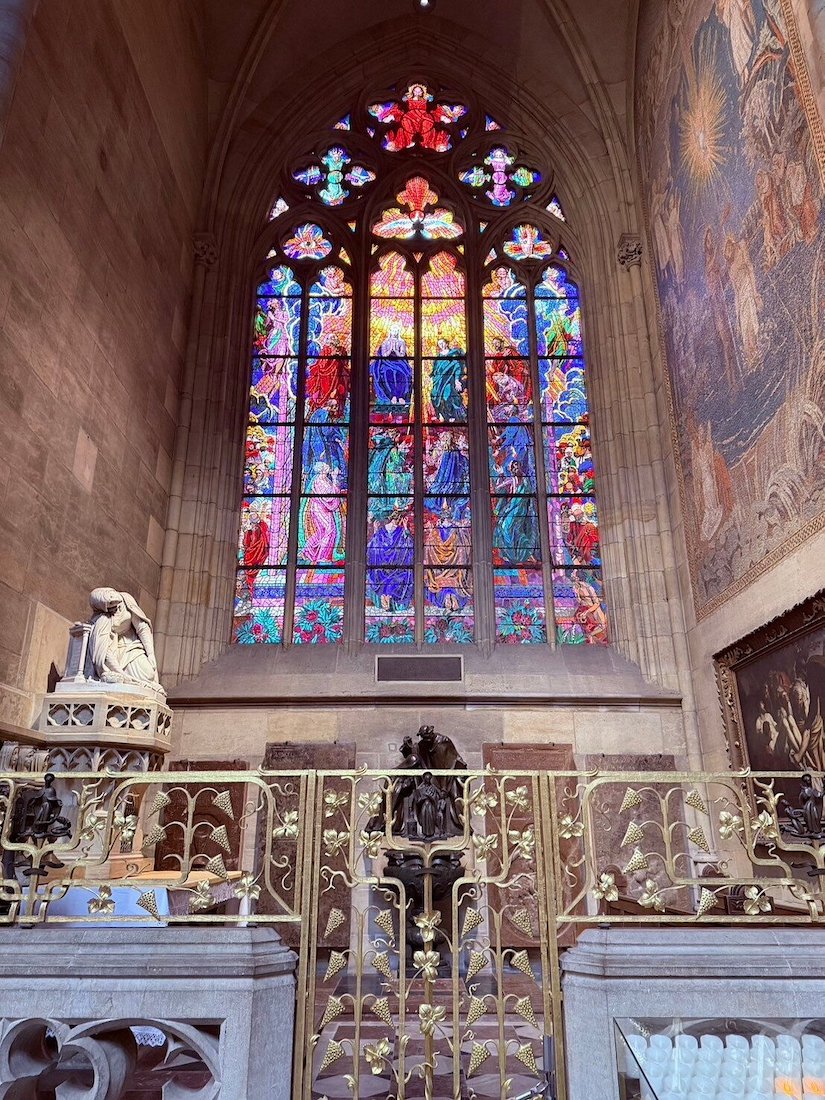
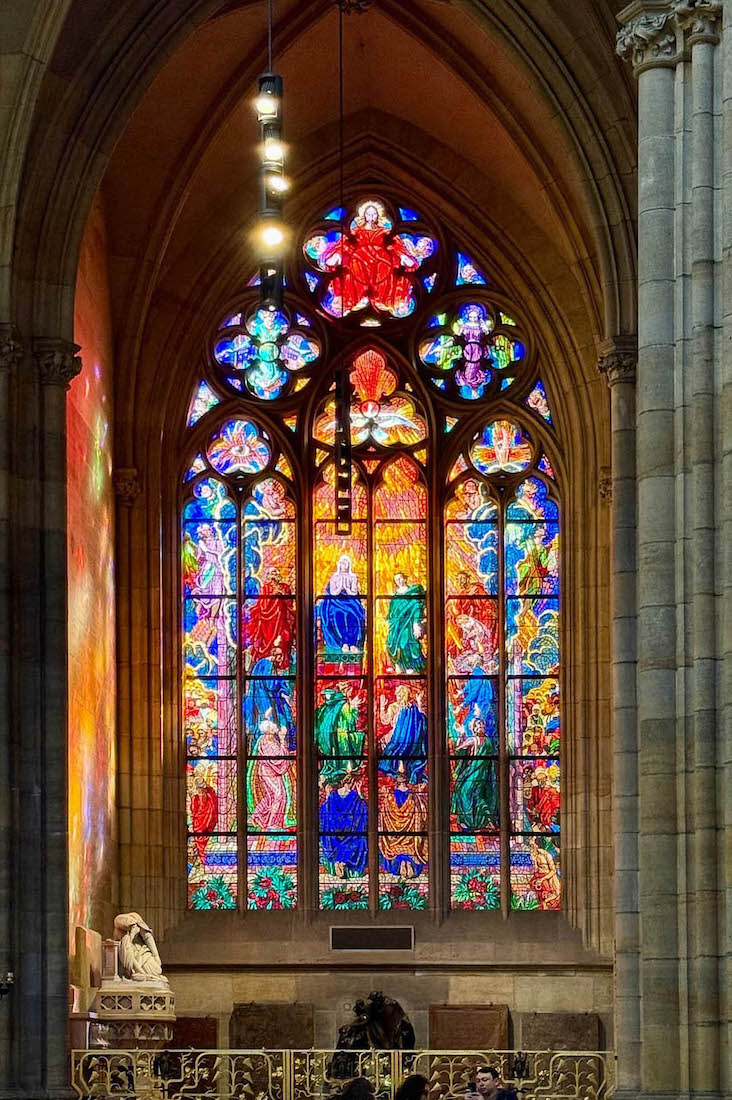
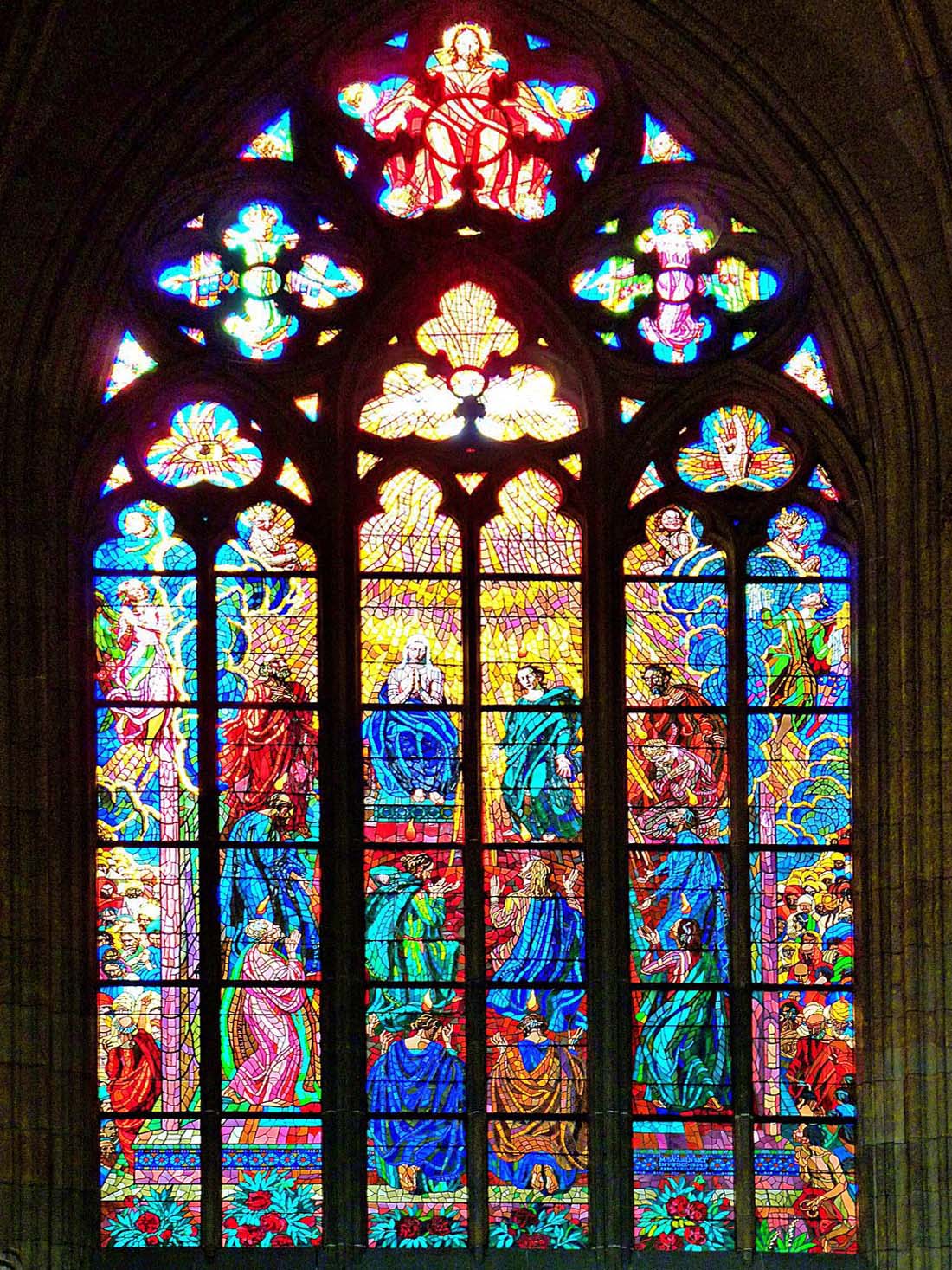
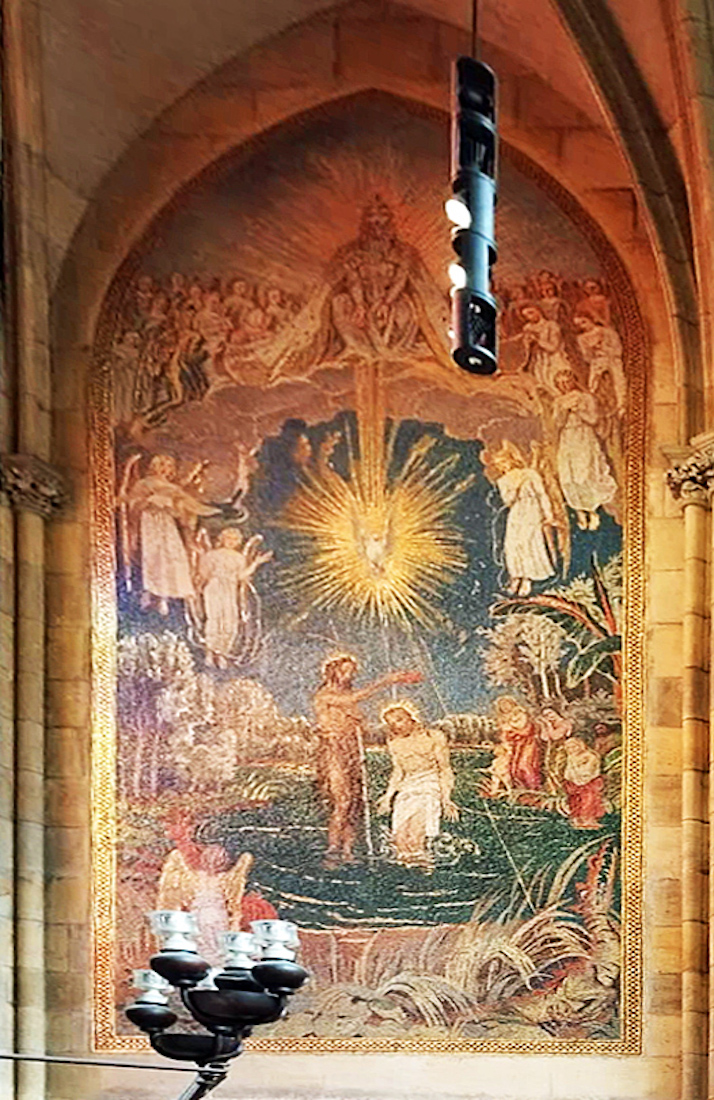
The final chapel is the St Ludmila Chapel. St Ludmila was the grandmother of St. Wenceslas and taught him Christian kindness. She married Borivoj, the first Czech prince to adopt Christianity. Ludmila raised St. Wenceslas as her son after the death of his father. The anti-Christians who ran the country after the death of Wenceslas’ father, opposed Ludmila and resented her influence over Wenceslas. Before Wenceslas could ascend the throne, they strangled Ludmila, hoping to end Wenceslas’ pursuits of Christianity. However, it had the opposite effect, and after her death, Wenceslas was even more passionate about securing his grandmother’s legacy. •• There is a fine mosaic of the baptism of Jesus on the right wall of the chapel. [Photo1 Credit: nancy921] [Photo2 Credit: darthsansa14 ] [Photo4 Credit: Liefhebber] [Photo4 Credit: Krzysztof Sobierajski]
X32. SAINTS SCULPTURE TA TA
We now find ourselves once more at the rear of the nave, and we make our way forward to the high altar. •• Before us in the central aisle of the nave is a group of statues depicting the saints Vojtěch, Radim and Radla. The idea for the statues goes all the way back to 1936. In 1947, a plaster version was installed. But the work was removed a year later when the Communists seized power in Czechoslovakia. The work is closely connected to Cardinal Josef Beran when he was the archbishop of Prague. Depicting Saint Vojtěch and fellow saints, the sculpture was unveiled in a special ceremony a day before the cardinal’s remains were returned from the Vatican, where he had been buried in the crypt of St Peter’s Basilica. The statues are cast in silver and weigh 320 kilos. •• In the first photograph above, we see a large crucifix on the South wall. [Photo1 Credit: GT] [Photo2 Credit: Chinese]
X33. SOUTH NAVE CRUCIFIX AND OTTAVIA SPINOLY TA TA
In the South nave, on the wall of the Great South Tower, hangs a very large crucifix with Christ on the Cross. Near this, and below is a memorial epitaph of Genoese nobleman Ottavia Spinola, crafted by Giovanni Antonio Brocco. There are a great number of memorials and plaques in St Vitus’ Cathedral, but many of them are hidden away in the chapels and are inaccessible. Wikimedia has a list of 28 burials at the Cathedral, but for many of these the commentary is in the Czech language. [Photo1 Credit: Neil D] [Photo Credit: nancy921]
X34. TRANSEPTS AND CROSSING LK TA
At the front of the nave, where the transepts meet the main axis of the Cathedral is the crossing. The crossing has four large corner pillars which support the central tower and spire above. Of interest here is the circular trapdoor in the crossing roof: a place for the transfer of building materials. [Photo2 Credit: LIGHTBOX3D]
X35. CROSSING FIGURES GSV TA
The corner pillars of the crossing have special interest in that they support a number of large carved historic figures and bishops. [Photo1 Credit: Tomasz Sz] [Photo2 Credit: Ian Campbell]
X36. VIEW ACROSS THE CHANCEL (CHOIR) TA
East of the crossing is the chancel, where the choir sits, and beyond that, the sanctuary, set within the Cathedral apse. Nearest us is the ornate pulpit, and more centrally, the top of the Royal Mausoleum. [Photo Credit: Chinese]
X38. ROYAL TOMB TA TA
The area between the crossing and the sanctuary is the chancel, and this is where the choir sits. In this Cathedral, beneath the chancel there is a subterranean space beneath the chancel, the Royal Crypt. This crypt houses the remains of many Bohemian kings, queens, and Holy Roman Emperors, as well as other members of the Habsburg dynasty. Above the Royal Crypt is the Royal Mausoleum seen here, a marble structure containing the tombstones of Ferdinand I of Austria, his wife Anna of Bohemia and Hungary, and Holy Roman Emperor Maximillian II. As we have seen, the Royal Crypt is accessed by means of a staircase from the Chapel of the Holy Cross. [Photo1 Credit: Rob] [Photo2 Credit: LiefHebber]
X39. APSE WINDOWS TA
The Apse Window is an incredible tryptic. In the centre, we see the figure of Jesus, falling into the arms of the Father. This is a depiction of the Holy Trinity, with the Holy Spirit in the form of a dove. •• In the left window, we see the Virgin Mary dressed in Royal purple and wearing the crown of St. Wenceslas. On either side of her are the kneeling figures of blessed St. Mlada and St. Ludmila. Below Mary is Spytihněv I, the first historically documented Bohemian ruler and husband of St. Ludmila. In his hands, he holds a model of a Roman Basilica, which he built in her honour. •• In the window at right, we see St. Wenceslas and St. Vitus on their knees. Below is Charles IV who is also holding a model of a Gothic Cathedral. [Photo Credit: Chinese]
X40. SANCTUARY AND HIGH ALTAR TA TA
Finally we come to the sanctuary and the high altar. Near the front of the sanctuary is a rather chunky practical altar with candlesticks, a microphone(!) and a nearby lectern. In many cathedrals this would be placed closer to the nave and called ‘the nave altar’. The high altar is placed at the back of the sanctuary. It has a flat table area with the reredos rising from behind, and was carved from opuka stone in a shape resembling a Gothic ark. It has a staircase rising up on either side – destination unknown. •• I assume that the central gold and red chair is the bishop’s throne – the cathedra. This completes our exploration of St Vitus Cathedral. [Photos Credit: Dieter H]
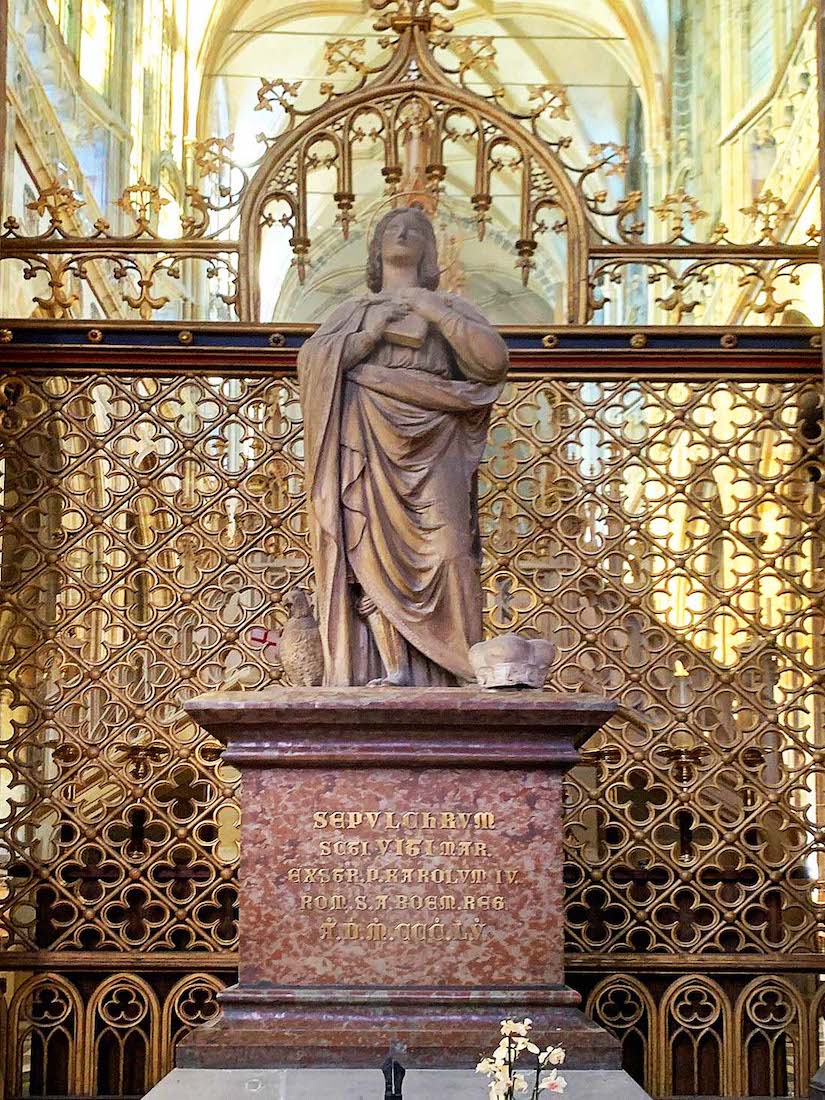
TA Michele
CONCLUSION
I hope you have enjoyed visiting St Vitus Cathedral with me. What an amazing Cathedral it is!
I am grateful to my wife Margie who, as always, has proof-read these pages. However, I am also happy to receive constructive comments or corrections. The best websites are the ones which have no errors.
As mentioned in the Index, none of these photographs are mine.
A number of photos come from a Flickr site by Larry Koester. These are marked [LK].
Many photos appear online in sets such as Trip Advisor [TA] and Google Street View [GSV]. These contributions are virtually impossible to follow up, but are listed here with the above initials and the photographer’s name. The links for the galleries are Trip Advisor and Google Street View.
There are also photos from Wikimedia Commons [WC].
I wish to express my gratitude and indebtedness to all those photographers whose work appears here. If there is any query, please contact me at the email address below.
The text also comes from a variety of sources.
Two very useful resources are from The Creative Adventurer, with a guide to the Cathedral, and a guide to the Cathedral Windows.
The Cathedral probably has its own website, but it is difficult to find amongst the plethora of advertising sites!
Paul Scott Site created 4 / 2025


